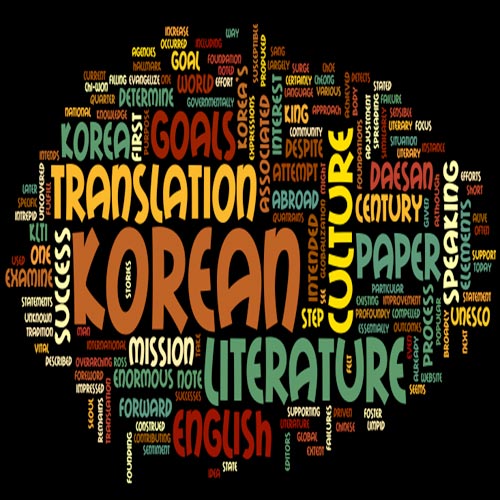 I will be presenting a paper at Dongguk University this Saturday on my impression of successes and failures in translation of Korean literature into English. It is the first of three papers I have in mind: It is a direct outgrowth of my teaching a graduate class, “Discovered in Translation” and most anything good in this paper has much to do with my super-genius students who take my probably incomprehensible opinions and feed them back to me in sensible form. ^^
I will be presenting a paper at Dongguk University this Saturday on my impression of successes and failures in translation of Korean literature into English. It is the first of three papers I have in mind: It is a direct outgrowth of my teaching a graduate class, “Discovered in Translation” and most anything good in this paper has much to do with my super-genius students who take my probably incomprehensible opinions and feed them back to me in sensible form. ^^
The paper is longish, so I will take it in four slices. The first one is a kind of explanation of what will be discussed.
PAPER BEGINS>>>>
In 1983, in the foreword to “One Way And Other Korean Short Stories,” UNESCO editors felt compelled to note:
Literary distinction traditionally has been the hallmark of the refined man in Korea. This tradition is as alive and vital in Korea today as it was when Choe Chi-won first impressed the Chinese with his fluid, limpid quatrains, or when Cheong Cheol sang the praises of Lip Po in the sixteenth century. In fact, twentieth century Korea has produced an enormous body of literature, most of which is still unknown in the English speaking world (KNC for UNESCO, v).
Certainly, even earlier expressions of this sentiment could be uncovered by an intrepid investigator. In 2009, a quarter of a century later, despite a governmentally sanctioned effort to increase the knowledge of Korean literature in the English speaking world, the situation remains largely the same. This is despite what Ross King has described as “a surge in interest in and support for the ‘globalization’ of Korean literature by various agencies and foundations in Seoul.” (King 1)
This paper will first examine the current target culture (TC) state of translation in the English language. Next it will attempt to determine where relative successes and failures have occurred in existing translations, attempt to determine what elements are associated with success and what elements are associated with failure. Finally, this paper will suggest that by connecting these dots, including filling a lacuna this paper detects between outcomes and goals, Korea literary translation can take an enormous step forward.
The overarching idea here is that the translation of Korean literature into English is driven by some specific goals, but that the extent to which these goals are achieved is often not assessed and then used as the basis for adjustment in the translation process (broadly construed). For instance, the mission statement of the Korean Literature Translation Institute is:
LTI Korea’s mission is to fulfill the Korean government’s goal of contributing to global culture by spreading Korean literature and culture abroad. (KLTI website)
Similarly, the Daesan Foundation’s “Founding Purpose” is, “by supporting the projects of public interest intended to ‘foster Korea’s national culture’ and ‘globalize Korean literature.’” (Daesan). Given these mission statements, it seems sensible to examine the works of the KLTI, the Daesan Foundation (and other agents that evangelize Korean literature and culture abroad) to see how profoundly their efforts are affecting the English speaking international community. This paper intends to be a baby step forward in that process.
It should be noted at the outset, that although the approach this paper takes is essentially a marketing one, this focus IS NOT intended to be at the expense of other goals of Korean translation. Instead it is to note that popular success is ALREADY one of the stated goals of most Korean translation, and that the success of this particular goal might be susceptible to improvement.
<<<<<PAPER ENDS
Tomorrow….. what it looks like out there for existing translations of Korean literature


